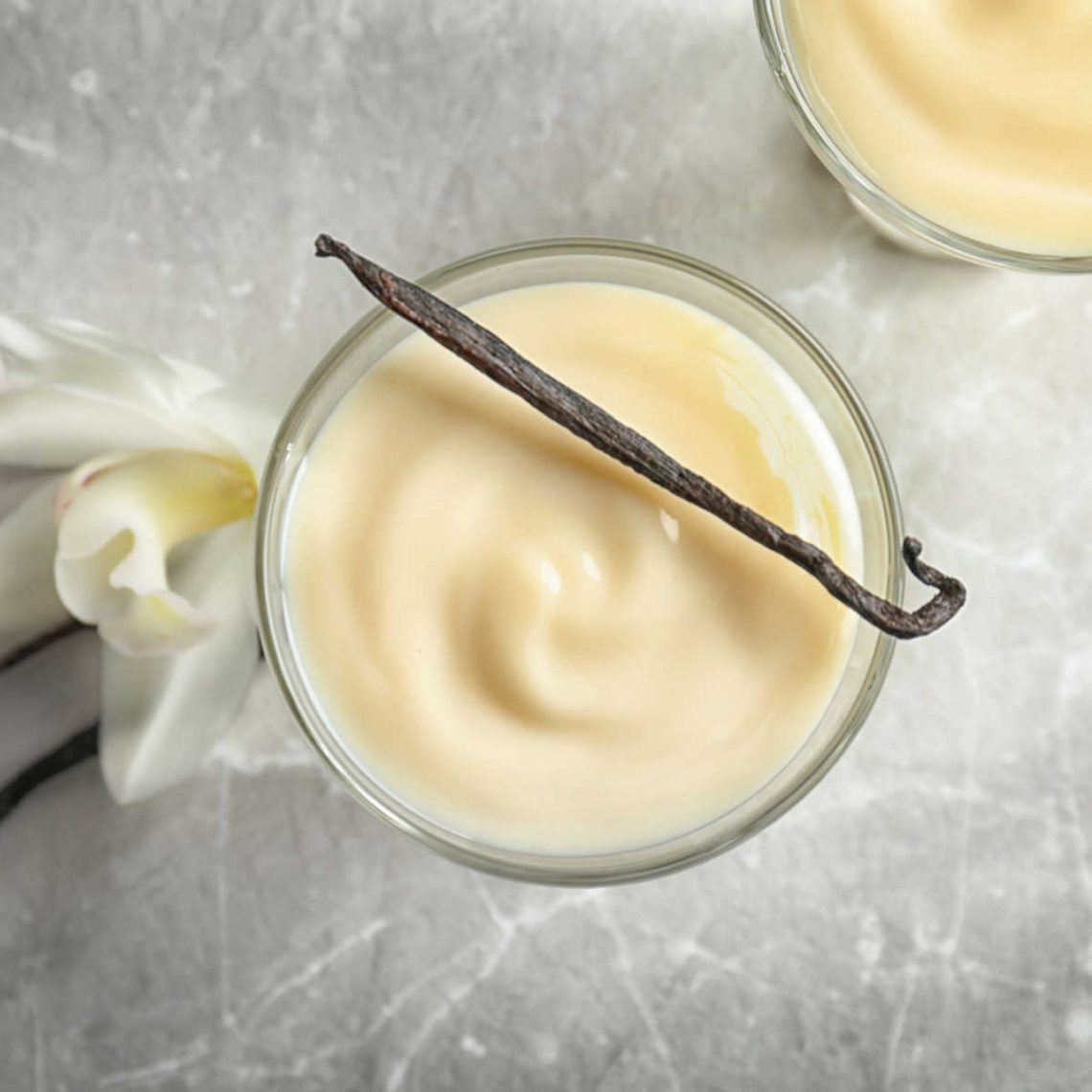
Whatever Happened to Pudding?
I’d like to know: what happened to pudding? Especially in the 1950s, thanks to good old Jell-O, our pantry was well-stocked with vanilla and chocolate pudding boxes. And when our local grade school began providing hot lunches, I would look forward to the small bowls of vanilla or tapioca pudding that our cook Violet Sampson provided for us on occasion. But in the succeeding decades, we Americans became a little uppity when it comes to desserts.
Maybe it was TV and Julia Child, but there were mousses and flans and zabagliones and crème brûlée. All were more complicated, the flavors more exotic, and most took more time and care to prepare. As for me, I just long for a good old simple vanilla pudding. I’m not the only one. The Washington Post featured a story by columnist John Kelly entitled “Whatever happened to butterscotch pudding mix? Has an old friend vanished?”
You can still find boxes of Jell-O pudding in most supermarkets. Indeed, during Thanksgiving week, a woman in front of me at the checkout line had four boxes of Jell-O banana cream pudding. The company, now owned by Kraft, still sells the usual flavors: chocolate, vanilla, pistachio, and butterscotch and even lemon. They also offer newer and seasonal puddings such as pumpkin spice and instant cheesecake. As for me, I’d prefer to make my own vanilla pudding. It’s not difficult. Same goes for chocolate pudding.
From Homer to Pink Floyd
Puddings themselves have a long history. Outside the U.S., and especially in the United Kingdom, pudding describes a sweet and savory dish – everything from a dessert such as Dickens’ Christmas figgy pudding to Yorkshire pudding and steak and kidney pudding. Turns out that the word pudding is believed to derive from the Latin word botellus, meaning sausage such as the French boudin. The Oxford English Dictionary says the word pudding dates to the 13th century when pudding was the stomach of a sheep, pig, or other animal stuffed with meat, suet, oatmeal, and seasonings. Pudding shows up in Homer’s Odyssey as a blood pudding roasted in a pig’s stomach. (Yes, haggis, along with pease porridge – also called pease pudding – toad in the hole, and Scrapple are all considered puddings.)
An early documented recipe is found in a 10th-century Arabic cookbook describing a thick pudding of dates cooked with clarified butter. And, of course, the most famous reference in literature is from Cervantes’ Don Quixote: “The proof of the pudding is in the eating,” often incorrectly stated as “the proof is in the pudding.” Mark Twain wrote about Pudd’nhead Wilson, and Pink Floyd’s “Another Brick in the Wall” ends with “If you don’t eat your meat, you can’t have any pudding!”
When pudding cloth was invented in the 17th century, it revolutionized puddings. No longer were animal digestive tracts necessary, and puddings could be made at any time. In America, puddings have come to refer to the creamy puddings, usually using sugar, milk, and a thickening agent. Their height of popularity was post World War II. Since the 1970s, their use and distribution has waned.
From grape nuts to mangos
And I’ve noticed that there are regional favorites. New Englanders still make grape nut pudding and Indian pudding using cornmeal and molasses. Local restaurants here often feature bread pudding, a cost-effective way to make use of leftover bread. Other regions favor rice pudding (with or without raisins) along with a wide variety of chocolate puddings, fruit puddings, and custards. In Chinese restaurants, you’re likely to encounter Hong Kong’s signature dessert mango pudding.
A box of Jell-O mix aside, most recipes for homemade vanilla pudding are simple: just milk, cornstarch, sugar, egg yolks, and vanilla extract. For those chocolate lovers, chocolate pudding is pretty much the same, with the addition of a little cocoa powder. That’s the beauty of a pudding – it’s simple. I’m not looking for a zabaglione, a blancmange, or a crema catalana, just plain old pudding. That’s why I am known to visit diners. I’m hoping to find a good banana cream pie.
Since it’s holiday season, I might even make my own such as this banana pudding pie with the addition of macadamia nuts. Of course, I could also revert to one of the favorite desserts of my youth: graham crackers, vanilla pudding, and sliced bananas layered in a baking dish, refrigerated for an hour or two and topped with whipped cream. It’s a simpler version of banana cream pie, but just as good. Ahh, for the good old days.
What about the rest of you? Any other pudding lovers out there? To comment, please click on “Read in Browser” or on the headline to view the blog on the website. You can log in and comment at the end of the blog to share your thoughts and start a discussion.
If you’d like to share the blog, click on the Facebook icon or one of the others. Thanks!





One Comment
Catherine Garnache
We’re having chocolate mousse for Christmas with raspberries that we froze this summer.